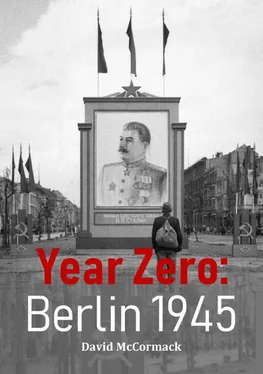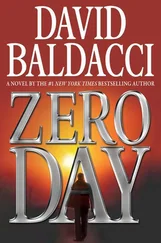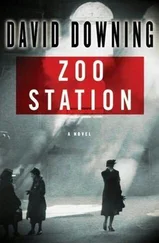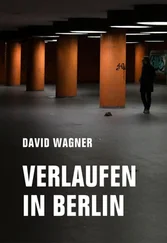The watches hand crept slowly forward. The murderous artillery fire moved off to the north. The bombs were already exploding somewhat to the side of us. The time for our attack came even closer… A series of green verey lights climbed into the sky. The reconnaissance parties, engineers and submachine-gunners climbed out of their trenches and cover to storm the canal bank, the engineers dragging up the boats to cross by, and behind them came the landing troops… The riflemen had it somewhat easier than us as they did not have to get heavy tanks and self-propelled guns across… It looked as if everyone was convinced that the result of the battle depended entirely on his personal efforts.
Once it became light we could see several dark objects on the opposite bank. These were the members of our storm groups… I knew precisely how important it was to support the men. What could they achieve on the other bank with their light weapons… The commanders of two brigades of the Breakthrough Artillery Division suddenly appeared near me. They had assessed the situation and were already giving the necessary orders. Some stout hearted gunners hastened past us on their way to establish a forward observation post on the other bank. Shortly afterwards the guns thundered, clearing the way for our battalion.
At last Bystrov reported that the bridge, which the enemy had made impassable the day before, was now usable. Nevertheless, only light tanks could pass over the temporarily repaired bridge under heavy fire… The enemy had recovered from our artillery preparation and was now conducting a massive resistance. We even had to reckon with counter-attacks… The artillery and tank fire fight had lasted for over an hour already. The Fascists were increasingly active… Bystrov had only been able to get three self-propelled guns across the canal, two others having fallen into the water with the wrecked bridge…
We tied down the enemy’s forces, but that was all we achieved. The same applied to our right hand neighbour. But our action lightened the load of other units. In the centre the 22 ndGuards Motorised Rifle Brigade, followed by the 23 rd, was able to force the canal, form a bridgehead and get its main forces across. Several hours later, a bridge had been established over which the tank brigades and corps rolled. The battle for the Teltow Canal was decided, the gateway to Berlin had been opened.
The defence of Teltow served to demonstrate to the Red Army that the battle for the capital of the Reich would be a hard fought affair.
The battle for Tempelhof would be equally as bitter, as the Red Army was determined to cut off this major airfield and possible escape route for the Nazi elite. General Chuikov sent in elements of the 39 thand 79 thGuards Rifle Divisions in a flanking manoeuvre. He then launched his main attack with elements from 8 thGuards Army and 1 stGuards Tank Army against the southern perimeter. Chuikov later recalled in his memoirs the savage fight for the airfield:
The aerodrome was defended by anti-aircraft units, SS troops, and tanks, the latter being drawn up in a large L-shape along the southern and eastern edges of the field. Most of them were dug into the ground, and thus made invulnerable fire points. It looked as though the Berlin garrison had no more fuel supplies for their tanks; all the petrol and diesel fuel, according to depositions from captured tank crews, had been taken by the air force for their planes.
In the underground hangars of the aerodrome planes were standing ready, tanks filled with fuel, able to take off at any minute; beside them were their crews, standing on duty every hour in the twenty-four, and amongst these men were pilots and navigators who in the past had been entrusted with the duty of flying Hitler, Goebbels, Bormann and other Nazi leaders to destinations all over Germany. From this information one might conclude that Hitler and his closest associates were still in Berlin, and might – who knows what the devil has up his sleeve! – slip out through this last loop-hole. So we had to do everything possible to ensure that this did not happen…
We did not know the precise location and other details of the exit gates from the underground hangars, so storm groups reinforced with tanks were assigned to the job of cutting off all access to the runways themselves by fire from guns and machine guns, and so keeping the planes bottled up underground. The plan worked perfectly. From the evening of 25 April on, not a single plane took off from the field, and by midday on 26 April the aerodrome itself, and the whole airport complex of Tempelhof – hangars, communications, installations, and the main ‘Affluence’ building were in our hands.
The Red Army advances came at a high price in terms of both men and machines. Weidling’s forces had inflicted heavy losses, albeit at high cost to themselves. Whilst the Red Army could sustain high losses, the German garrison could not. What Weidling needed more than anything at this time was reinforcements.
Remarkably, some German reinforcements made it into the beleaguered city. On the evening of 24 April, approximately ninety men, including most of the officers, the best non-commissioned officers and the divisional chaplain Monsignor Count Mayol de Lupe arrived at the Olympic Stadium. The volunteers who had accompanied their commander General Gustav Krukenberg to Berlin were on the whole fierce anti-Communists, arguably none more so than the divisional chaplain. The Monsignor was a larger than life character who was highly decorated, having been awarded the Legion d’ Honneur and the Iron Cross first and second class. Aged seventy two, he had been twice wounded in combat and was not adverse to anointing the dying with one hand, whilst firing his revolver with the other. His staunch anti-Communist credentials were laid out in this statement:
The world must choose; on the one hand Bolshevist savagery, an infernal force; on the other Christian civilisation. We must choose at all costs. We cannot loyally remain neutral any longer! It’s Bolshevist anarchy, or Christian order!
The uncompromising cleric joined his comrades in the defence of Neukolln. Later, the remnants of the volunteer force were pushed back into the central government district which had been designated as Defence Sector Z. Here, the Frenchmen fighting for Hitler’s lost cause acquitted themselves exceedingly well, turning the streets of Berlin into a graveyard for Soviet armour.
Chapter Nine
Banner of Victory
At noon on 25 April 1945, the Soviet 1 stBelorussian Front and the 1 stUkrainian Front effected their link-up at Ketzin, thus cutting off Berlin from the outside world. A ring of steel formed by four tank armies and a further five infantry armies choked off the vital arterial lifelines leading into the city. To the north, Marshal Rokossovsky’s 2 ndBelorussian Front was on the point of breaking through the eastern flank of General Manteuffel’s 3 rdPanzer Army, his aim being to prevent these German forces from moving south to reinforce the Berlin garrison. Meanwhile, to the south, General Busse’s 9 thArmy was gradually being pushed away to the south-west of Berlin. An attack by German battle-groups on the morning of 26 April achieved some success with the severing of Soviet communications on the Baruth-Zossen road. However, dogged defence by the 395 thRifle division prevented a breakthrough at Baruth. Thereafter, the German forces were once again enveloped, this time in the woods north-east of the town.
As the Soviet stranglehold tightened, Berlin began to die. The grand neo-baroque telegraph office on Oranienburger Strasse ceased operations entirely, following the receipt of a last message from Tokyo which simply said ‘GOOD LUCK TO YOU ALL’. The civilian telephone network somehow continued to function as outlying districts of the city were overrun, though links with areas outside Berlin ceased altogether on 26 April. Incredibly, a young Soviet officer named Victor Boev used the civilian network to phone Goebbels’ Propaganda Ministry, and even more incredibly was put through to the minister himself. Boev, who spoke excellent German held a brief conversation with Goebbels:
Читать дальше












